
St Andrew's Anglican Church, Carrick – exterior from the south-east
(photograph by Trevor Bunning [March 2017])

St Andrew's Anglican Church, Carrick – exterior from the south-east
(photograph by Trevor Bunning [March 2017])
Historical and Technical Documentation by John Maidment
© OHTA, 2002, (last updated March 2017)
This diminutive church of stuccoed brick was consecrated in 1845 after its conversion from a schoolhouse that had been built in 1843. The crenellated tower was added in 1863.1 The building consists of a three-bay nave and chancel and small transepts. The east window appears to have been designed and inserted by architect Alexander North.

St Andrew's Anglican Church, Carrick – organ
(photograph by Trevor Bunning [March 2017])
The organ was built by J.C. Bishop, of New Road, St Mary-le-Bone, London, Organ Builder To Her Majesty.2 Its precise date of construction and original location are not known; the DD pipe of the Stopped Diapason is marked 'W.E. Richardson, 13 Grove Street, Lisson Grove'. Richardson joined the Bishop firm in 1850, but may have only maintained the organ after this date rather than assisting to build it. Certainly it appears to date from before this time, so it may be presumed to have been built in the 1840s.3 The fine oak case includes a prominent cornice and two columns with carved corbels, one depicting a male head framed in laurel leaves, and a female head framed in ivy and rose flowers, possibly depicting the couple who commissioned the organ. It is almost certainly of domestic provenance given its retractable manual and pedals and its mounting on iron rollers. The date of its installation at Carrick is also unknown. It was claimed that the organ had been in use at St Paul's Cathedral, London, which may be just possible as James Bishop maintained the organ there at the time, and in his 1854 obituary it mentions that one of his small organs had been placed in a side chapel of the nave where it sounded extraordinary as a result of the highly reverberant acoustic.4
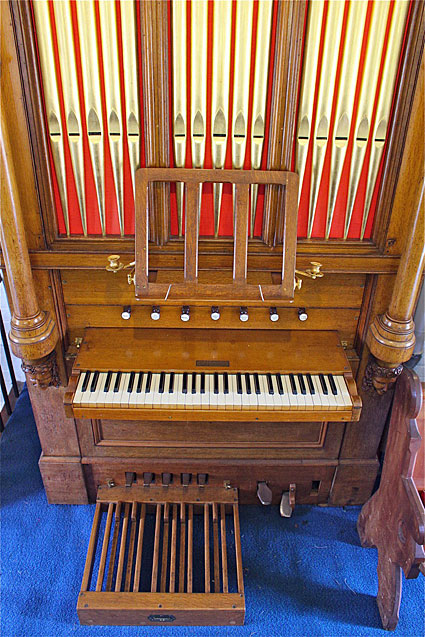
St Andrew's Anglican Church, Carrick – organ console
(photograph by Trevor Bunning [March 2017])
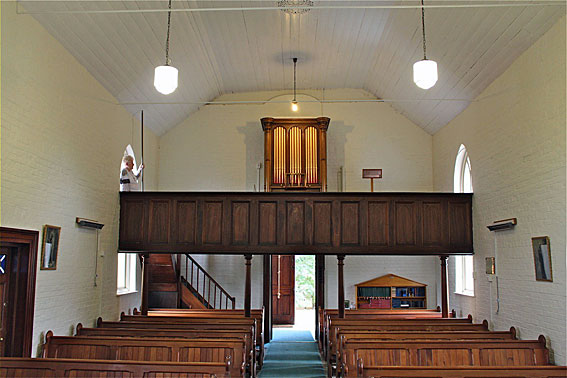
St Andrew's Anglican Church, Carrick – organ viewed from sanctuary
(photograph by Trevor Bunning [March 2017])
A thorough restoration of the instrument was completed in 1987 by S.J. Laurie, this including work on the windchest, wind system, action, composition pedals, pipework and casework.5
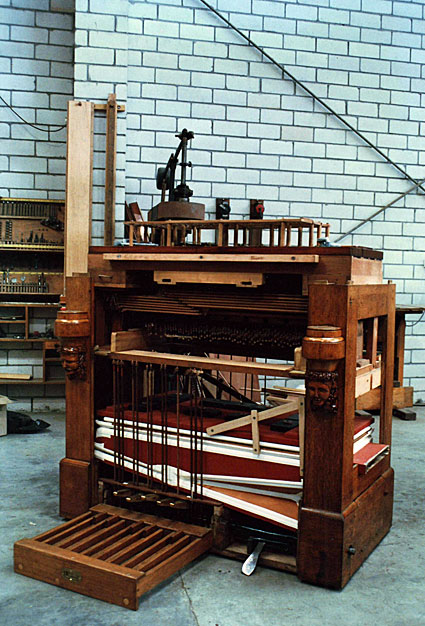
St Andrew's Anglican Church, Carrick – organ undergoing restoration at S.J. Laurie's workshop
(photograph by John Maidment [1987])
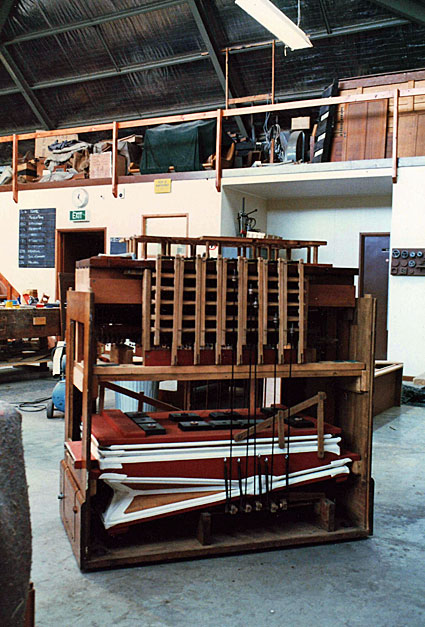
St Andrew's Anglican Church, Carrick – organ undergoing restoration at S.J. Laurie's workshop –
rear view showing the horizontal composition pedal action
(photograph by John Maidment [1987])

St Andrew's Anglican Church, Carrick – brass nameplate
(photograph by Trevor Bunning [March 2017])

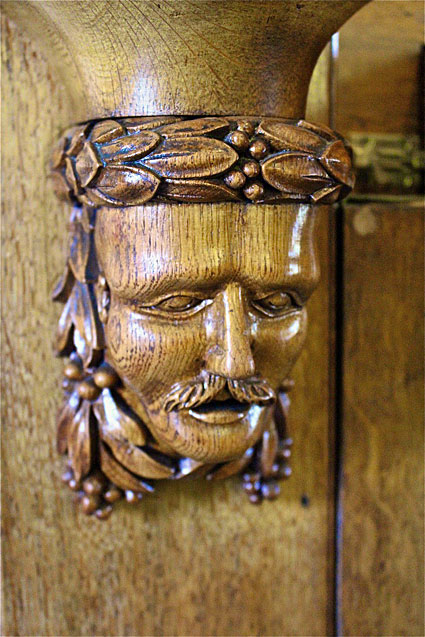
St Andrew's Anglican Church, Carrick – the two carved corbels
(photograph by Trevor Bunning [March 2017])
Similar early chamber organs by Bishop may be found at Holy Trinity Anglican Church, Cressy, Tasmania and at a private residence in Camberwell, Victoria.
| MANUAL | |
| Open Diapason bass | 8 GG-Ten. F#, bass from Stopt Diapason |
| Open Diapason treble | 8 Ten. G |
| Stopt Diapason | 8 treble pipes 'mounted' |
| Dulciana bass | 8 GG-Ten.B, bass from Stopt Diapason |
| Dulciana treble | 8 middle C |
| Principal | 4 bass borrowed below G |
| Hautboy | 8 middle C |
compass: manual GG-f3, 59 notes
pedal pulldowns GG-G, 1 octave
mechanical action
5 composition pedals
lever swell pedal
blowing pedal
wind pressure: 2-5/86
1 St Andrew's Church, Carrick, Tasmania. Carrick, 1960, p.2
2 As shown on the engraved brass nameplate
3 Laurence Elvin, Bishop and Son Organbuilders. Lincoln: the author, 1984, pp.342-3
4 The Musical World, 23 December 1854, p.836
5 OHTA News, vol.11, no. 2 (April 1987), pp 5-7 for an account of the restoration
6 Specification noted by John Maidment 1970, 2002